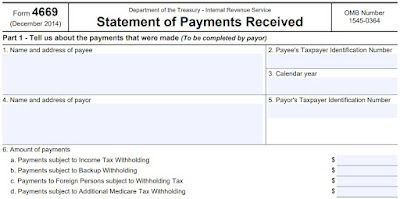For some reason, the taxability of life insurance seems to be an old reliable in tax controversy.
Granted, there are areas involving life insurance that are not intuitive. The taxation of a split-dollar life insurance policy to an employee can be a bit puzzling until you have studied it one or ten times. There is also the tax history of “janitors insurance,” which resulted in yet another tax acronym (“EOLI”), the creation of Form 8925, and the recurring question “what is the purpose of this form” from young tax accountants ever since.
No, what we are talking about is the income taxation of vanilla-ice cream-on-a-regular-cone life insurance. Life insurance is normally nontaxable. You can change that answer by not ordering vanilla.
David and Cindy Fugler bought permanent (that is, cash value) life insurance on their two children in 1987. There was the initial year payment, plus additional yearly premiums, some of which were paid by borrowing against the policies. After many years, they cashed-in the policies. The life insurance company sent Forms 1099, which the Fuglers did not report on their joint tax return.
COMMENT: As we have discussed before, the IRS loves to trace Forms 1099 to tax returns, as the process can be computerized and requires no IRS manpower. You, on the other hand, have no such luck and will likely contact your tax preparer/advisor – and incur a fee - to make sense of the notice. There you have current tax administration in a nutshell: increasingly shift compliance to taxpayers by requiring almost everything to be reported on a 1099. It is a brilliant if not cynical way to increase taxes without – you know – actually increasing taxes.
Here is a recap of the relevant Fugler numbers:
|
Policy #1 |
Policy #2 |
|||
|
Cumulative premiums paid |
6,850 |
6,850 |
||
|
Accumulated cash value |
22,878 |
23,428 |
||
|
Outstanding loan & interest |
(19,845) |
(20,699) |
||
|
Settlement check |
3,033 |
2,729 |
||
On first impression, it might seem odd that the Fuglers did not report the two distribution checks: the $3,033 and the $2,729. This is the amount they received upon policy cancelation – and after repaying policy loans and related interest and whatnot charges. Then again, one does not normally expect to have taxable income from life insurance. One should still report the 1099 amount (so the IRS computers have something to latch onto) and thereafter adjust the numbers to what one considers correct. Without that latch, these IRS matching notices are automatic.
So, what do you think:
· Do the Fuglers have income?
· If so, what is the income amount?
To reason through this, think of the life insurance policies as savings accounts. Granted, inefficient savings accounts, but the tax reasoning is similar. If you put in $6,850 and years later receive $22,878, the difference is likely (some type of) income. The same reasoning applies to the second policy.
So, you have income. Is there some way to not have income? Sure, if the cumulative premiums you paid exceed any cash value. In that case any refund would be a return of your own money.
But what is the income amount: is it the checks they received: $3,033 (for policy #1) and $2,729 (for policy #2)?
Normally, this would be correct, but the Fuglers borrowed against the polices. The loan did not create income at the time (because of the obligation to repay). That obligation has now been repaid with cash that would otherwise have been included in those distribution checks. You cannot avoid income by having a check go directly to your lender. Tax advisors would have a field day if only that were possible.
I would say that the income amount is the cash received plus the loan forgiven: $16,028 (policy #1) and $16,578 (policy #2).
Before thinking the result unfair, remember that the Fuglers did receive the underlying cash. The timing for the taxation of the loan was delayed, but even that result was pro-taxpayer. This is not phantom income that we sometimes see in other areas of the Code.
There is some chop in the numbers for the loan forgiven. As you can imagine, there are all kinds of fees and charges in there, as well as possibly accrued interest on the loan. The Fuglers thought of that also, arguing that the accrued interest should not be taxable – or at least should be deductible.
The “should not be taxable” is a losing argument, as all income is taxable unless the Code says otherwise. It does not, in this case.
That leaves a possible interest deduction.
The problem here is that Congress limited the type of nonbusiness loans whose interest is deductible: loans on a principal residence; loans used to buy or carry investments, college loans; loans (starting in 2026) on a new car with final assembly in the United States. Any other nonbusiness loans are considered personal, meaning the interest thereon is also personal and thus nondeductible.
The Fuglers could not fit into any of those deductible categories. There was no subtraction for interest, no matter what the insurance company called it.
The Fuglers had taxable income. They reported none of it on their return. The IRS – as usual – wanted interest and penalties and whatever else they could get.
The Tax Court agreed.
Our case this time was Fugler v Commissioner, T.C. Summary Opinion 2025-10.



